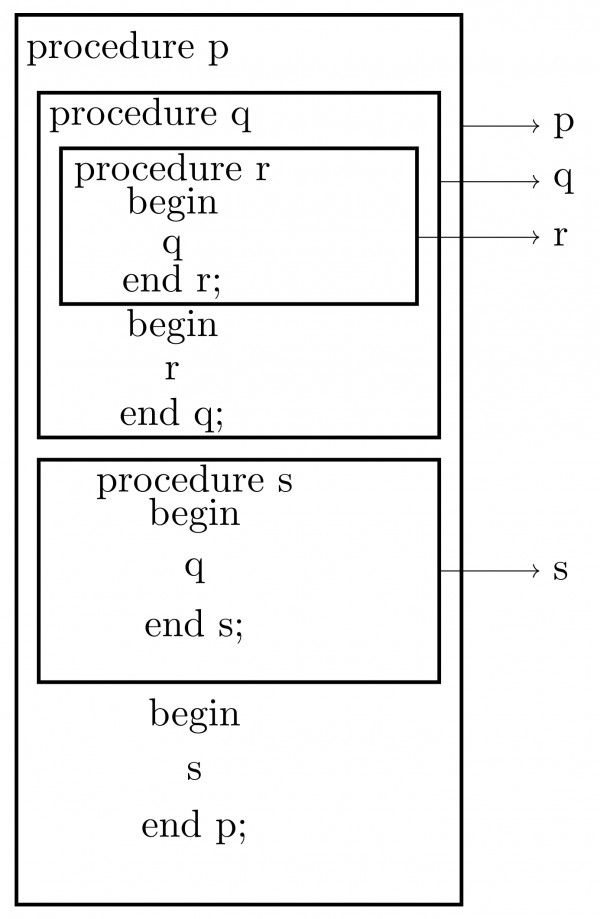
When procedure $p$ begins, $s$ is called $[p\to s].$ $s$ is enclosed within $p.$ So, any undeclared variable found inside $s$ will be searched for inside the body within which it is enclosed i.e., function $p$ (static scoping rules). So access link is from s to p.
Now, $s$ is visited and $s$ calls $q$ $[p\to s \to q].$ $q$ is visited and begin execution. Any undeclared variable found inside $q$ will be searched inside the enclosing function i.e. $p$ again. So, access link is from q to p.
Now, $q$ calls $r$ $[p \to s \to q \to r].$ $r$ is visited. $r$ begins execution and any undeclared variable found is searched in the enclosing function i.e., $q$ here. So, access link is from r to q.
$r$ calls $q$ $[p\to s \to q \to r \to q]:$ This is the sequence of calls which is already given in the question.
We have already seen access links for $q.$
So, it becomes
